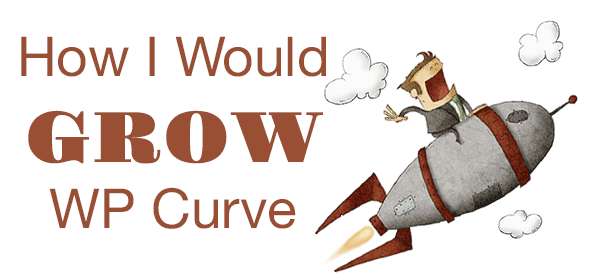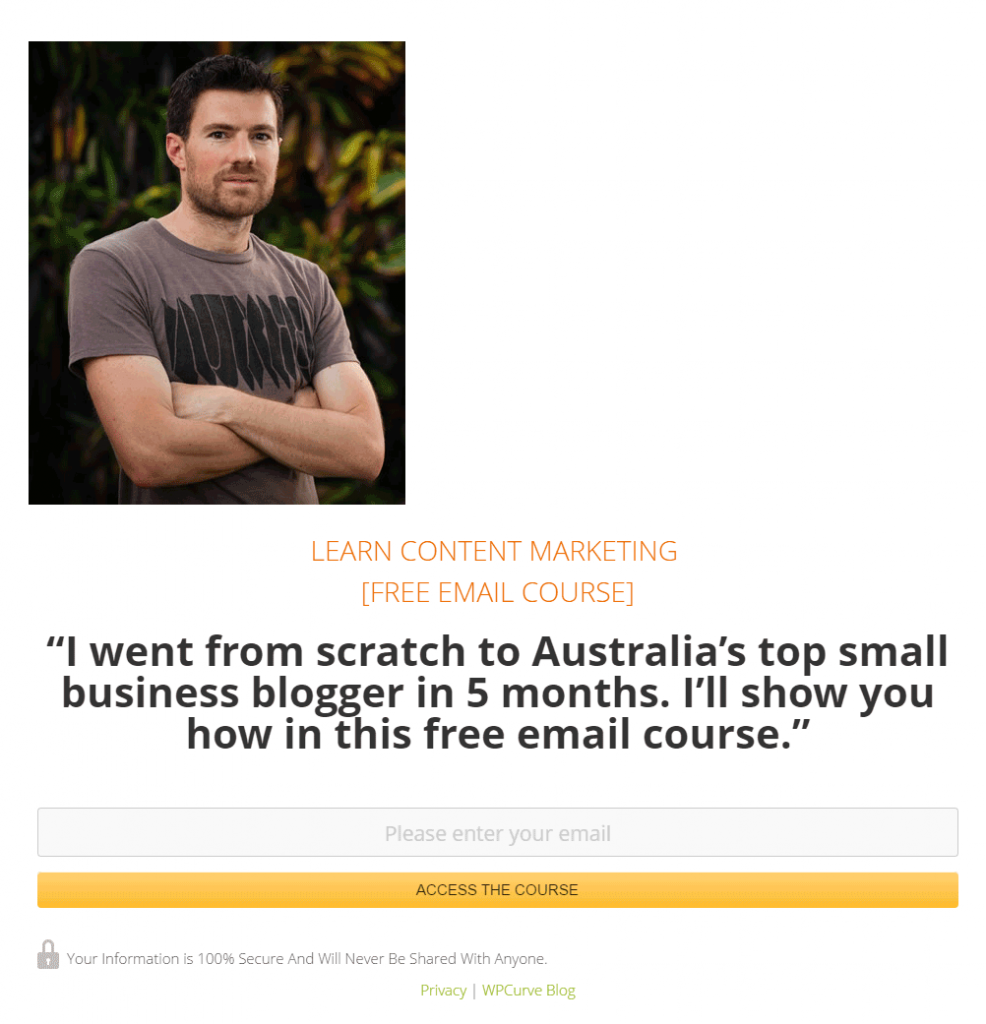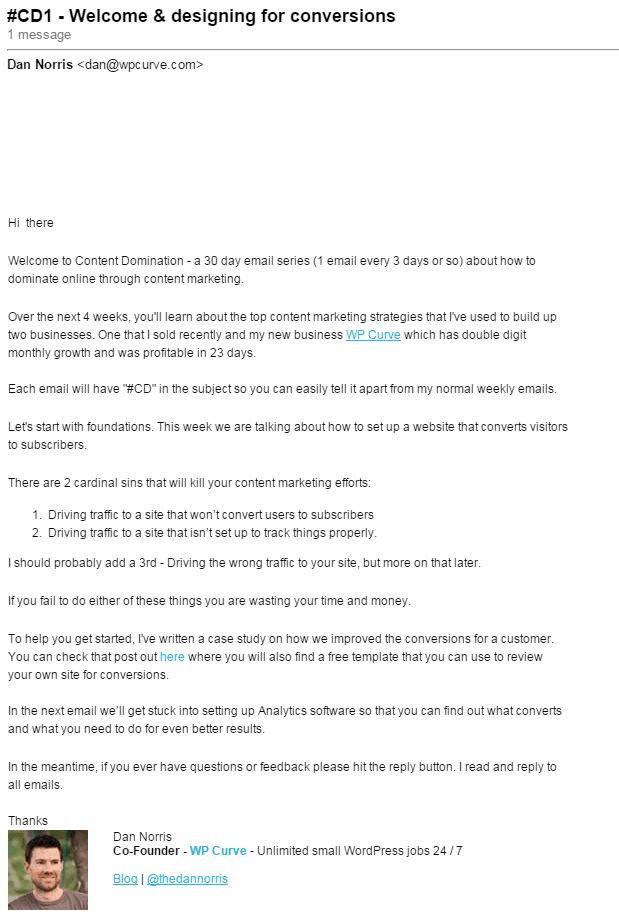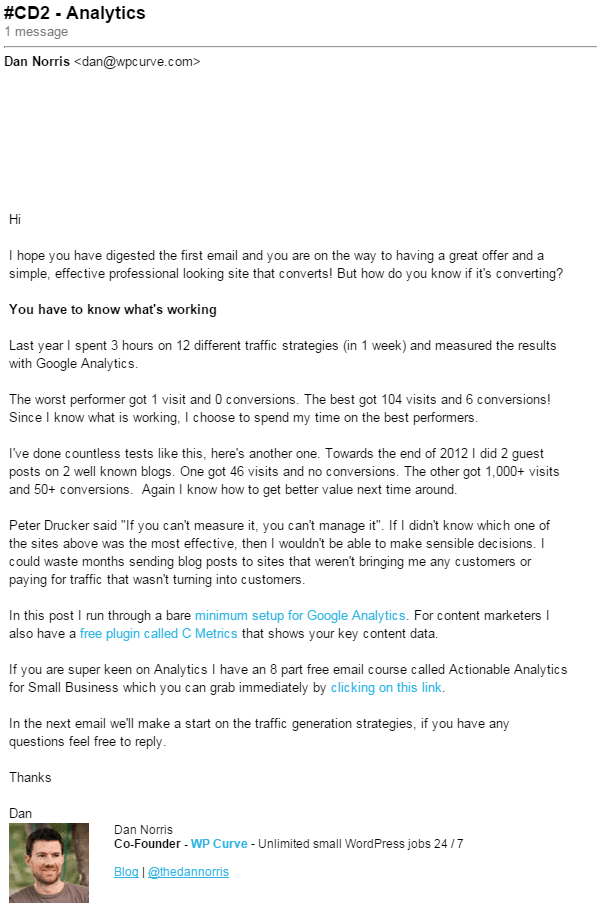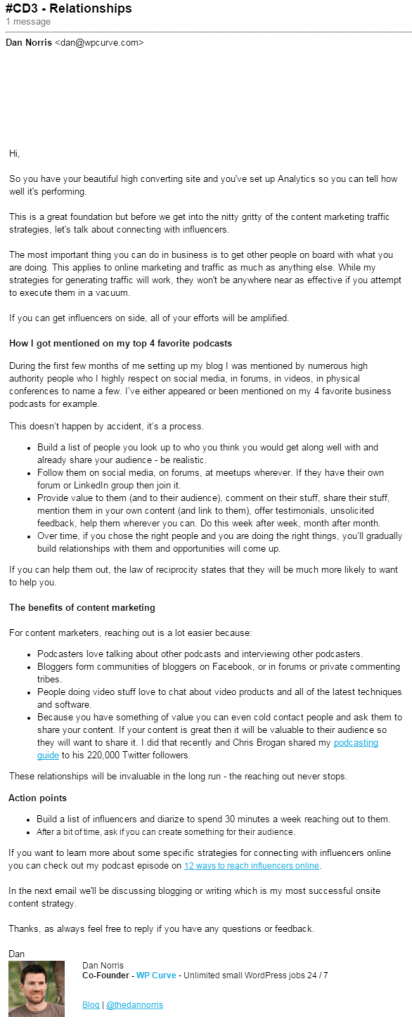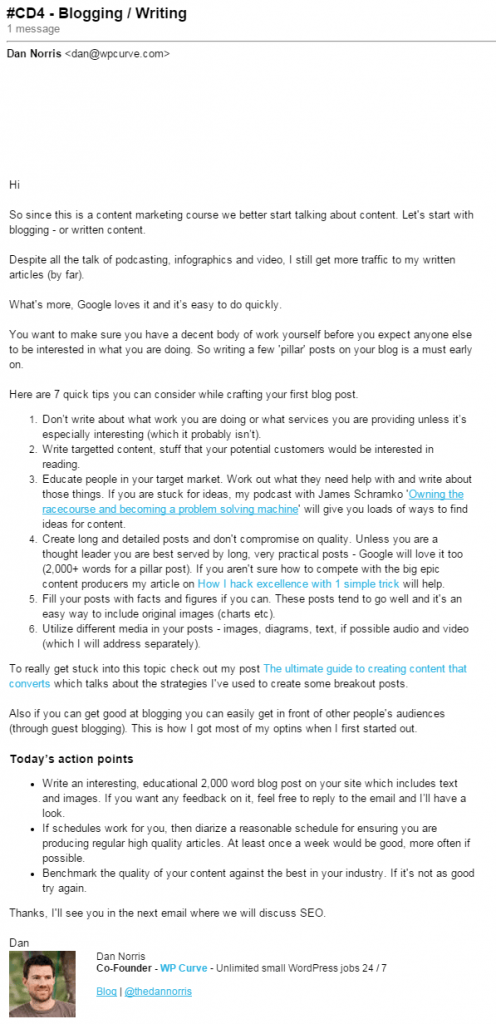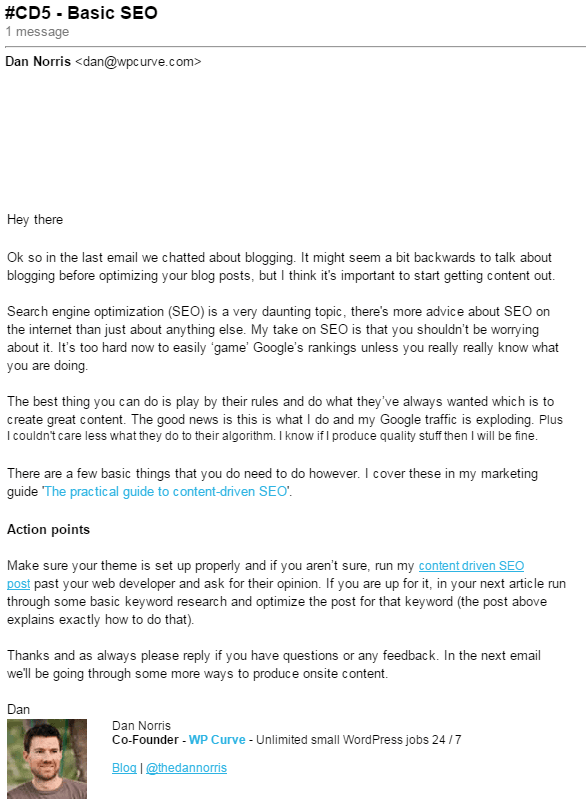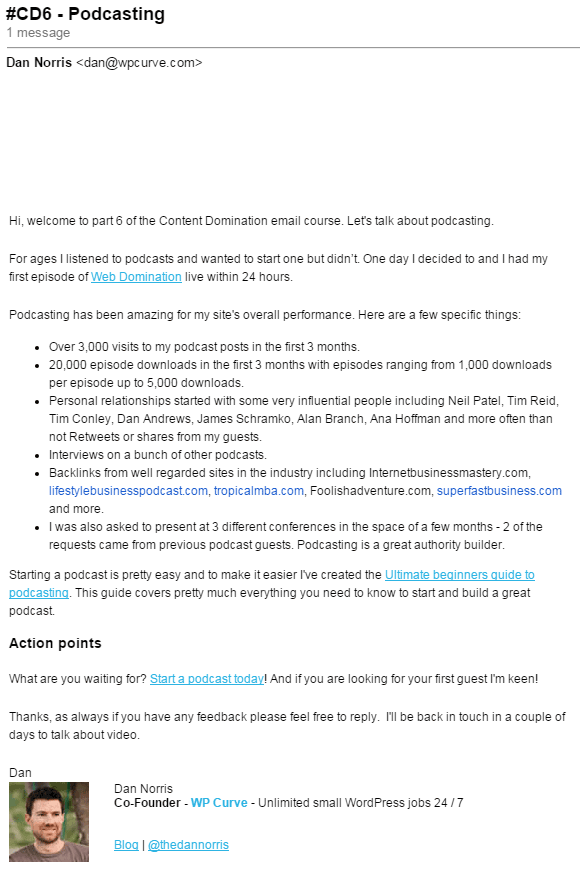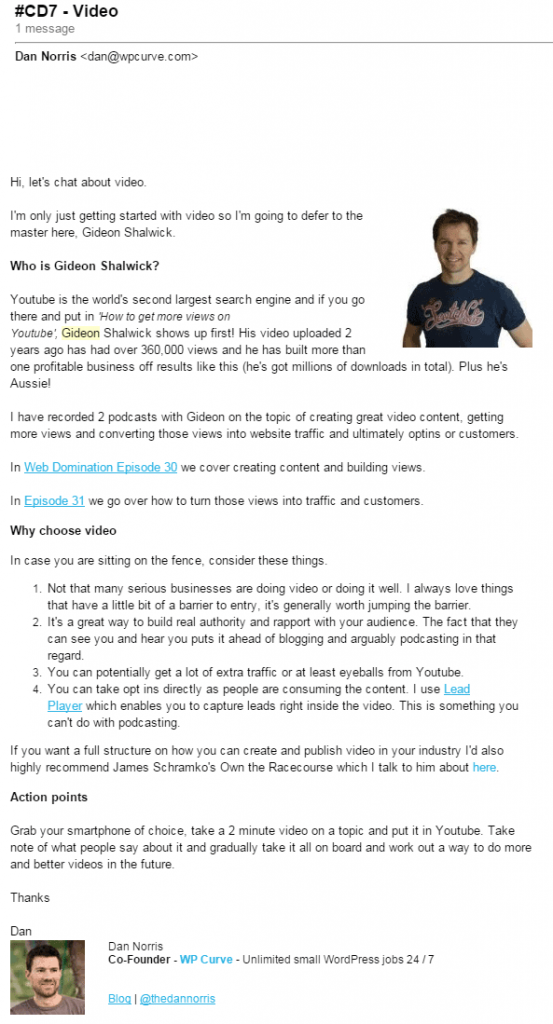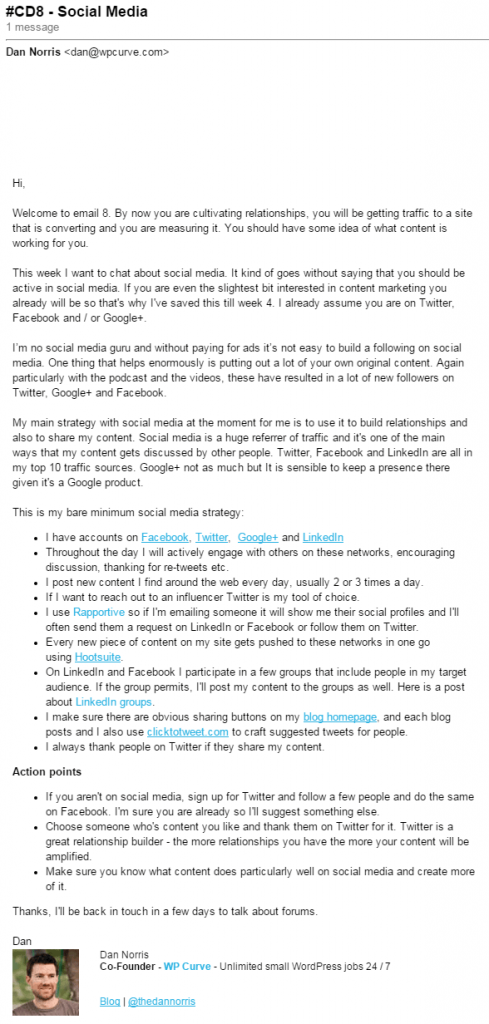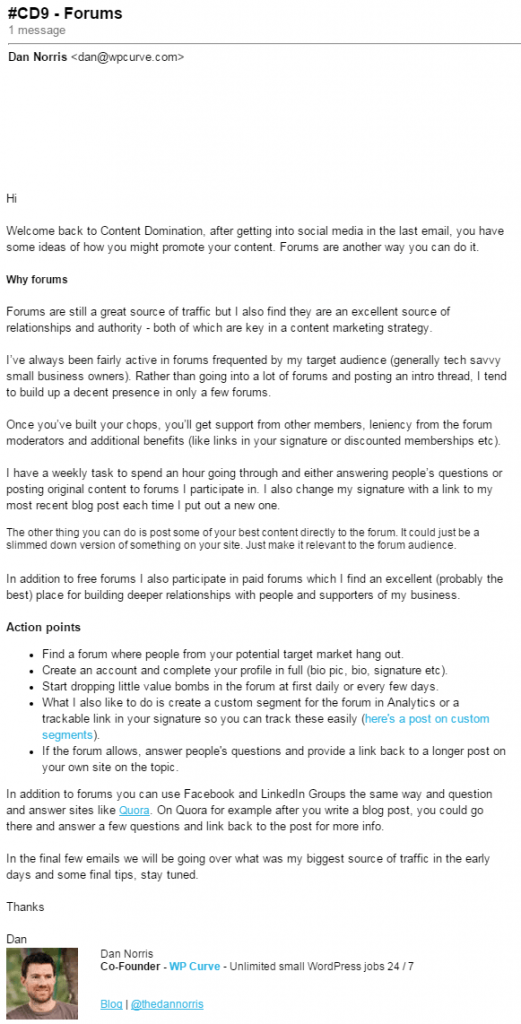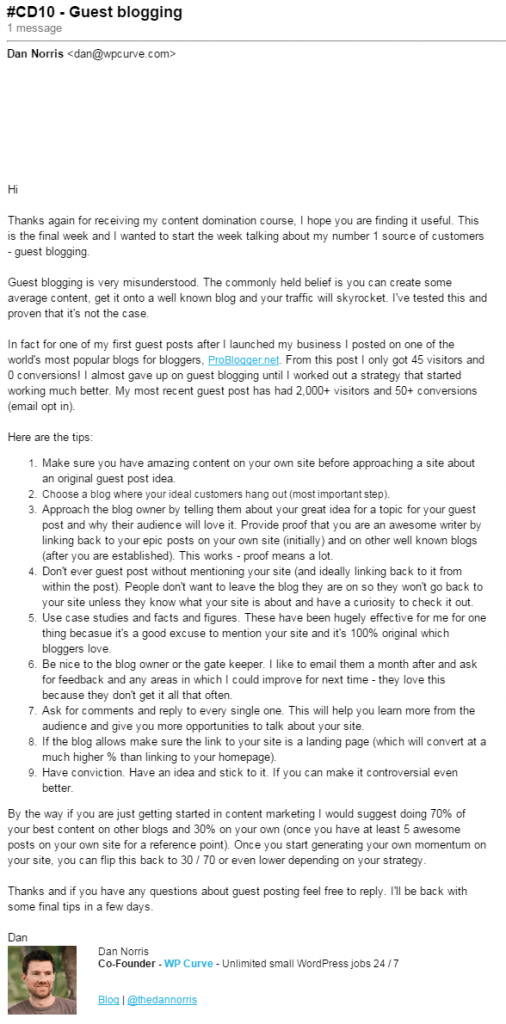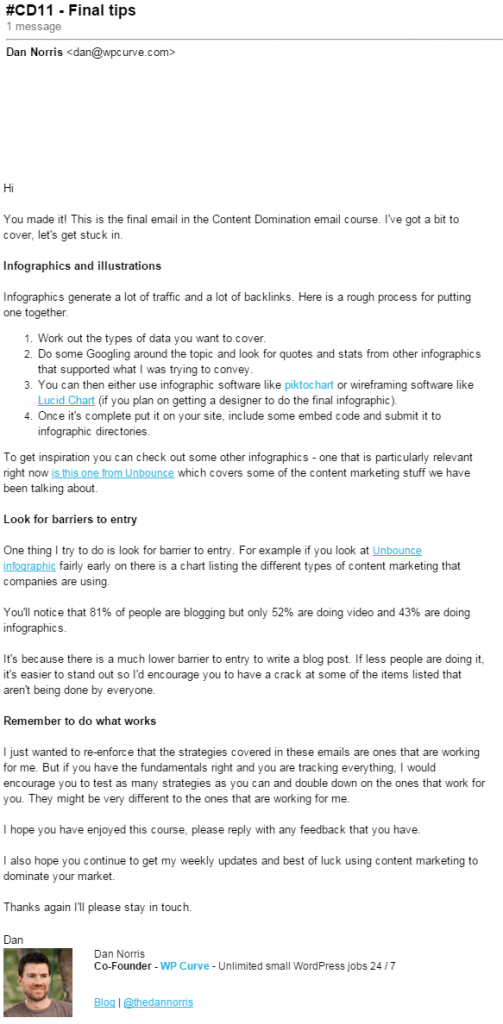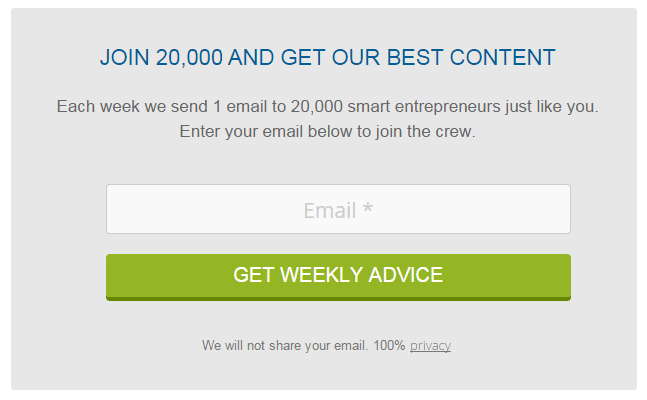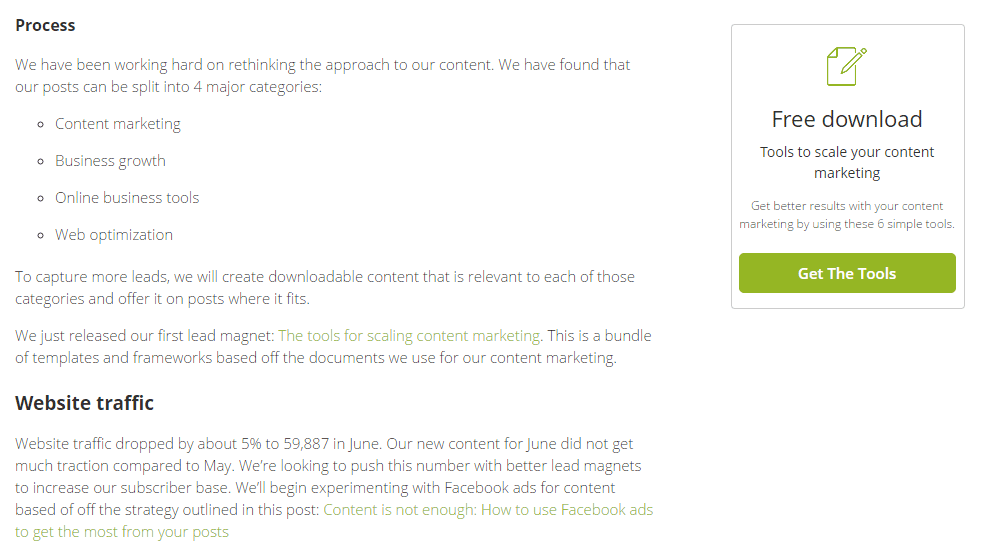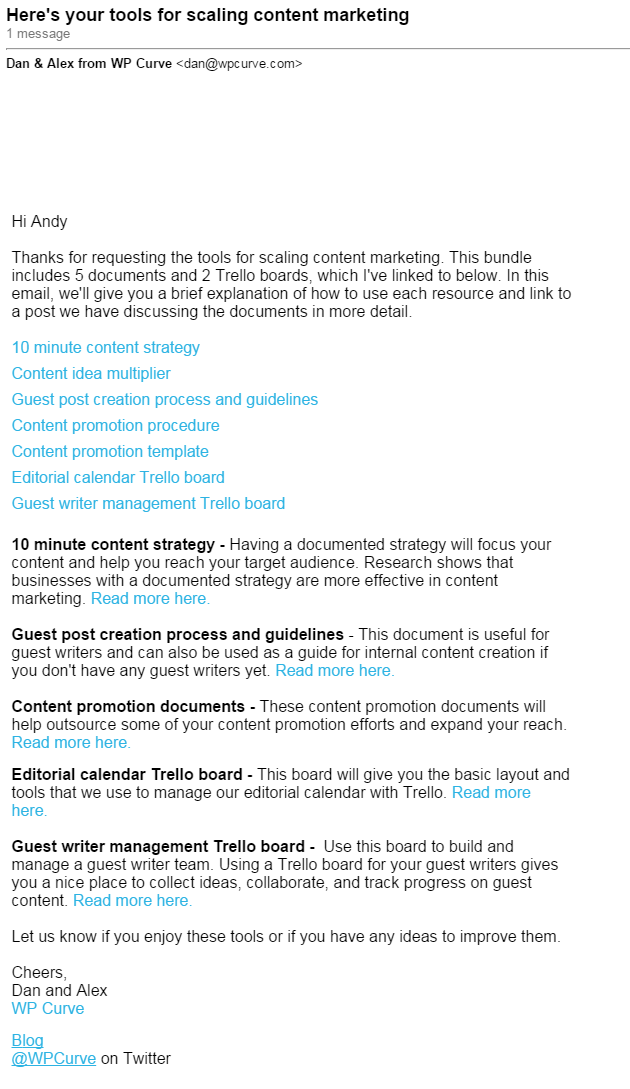WP Curve offers unlimited support and small jobs for WordPress sites. It was founded by Dan Norris and Alex McClafferty in June 2013 and in the 2 years since it has grown to a business doing over $60,000 in MRR. The WP Curve team achieved this impressive growth by focusing almost exclusively on content marketing, and it seems to have paid off.
Their fast growth has been incredible, but over the past 4 months they seem to have plateaued and are struggling to grow past their current level. Is $60k MRR as far as content marketing can take them?
No, not even close. BUT, if they want to get their growth back, they are going to have to change how they approach their marketing from the ground up.
The WP Curve blog is a finely tuned machine. They publish great content multiple times a week, using guest bloggers or directly from their content manager, Kyle Gray. To ensure the guest posts are high quality, they developed a strict style guide and Kyle personally reviews each post, making sure they meet their standards. By making sure all of their posts offer real value to readers and sticking to a consistent publishing schedule, they have grown their mailing list to over 20,000.
If you dig around their blog, you’ll find a handful of resources they offer in exchange for the reader’s email address. Their flagship program is an email course that aims to teach you how to excel at content marketing.
Immediately after signing up, you are greeted with this email:
The welcome email refers to the course as “Content Domination” and the subject starts with “CD#1,” but the landing page never mentions that name. It isn’t a bad name, but it is important to be consistent with all of your messaging. People aren’t always going to check their email as soon as they sign up for something, so when they come back later and see something they don’t remember signing up for, there is a good chance they will just hit unsubscribe and forget about it.
It is good that Dan lays out what the reader can expect, but he can’t forget the cardinal rule of marketing, “what’s in it for me?” Reinforce the benefits for the readers so that they are excited about the rest of the course. Just because you have someone’s email address doesn’t mean your work is done. If they aren’t convinced of the benefits, they can still click unsubscribe.
Lastly, “If you ever have questions…” is the sort of thing you write in an email when you are trying to be polite, but don’t really want anybody to respond. I don’t think those are Dan’s intentions here, but he is being too formal. Ask a specific question, or give them a reason to respond with something like, “Just hit reply and tell me why you signed up for this course and one thing you want to get out of it.”
On a similar note as the last email, this email starts off referring to something that wasn’t mentioned in the previous lesson. While not as big a mistake as before, you still don’t want to have people confused. Anything that takes them away from the goal of the current email is bad, so you don’t want them digging through their old emails to figure out what you are talking about.
Instead of saying “if you have any questions feel free to reply” I would saying something like, “Having trouble knowing where to start? Tell me a bit about your business and I will personally help you get on the right track.”
This email is pretty good. It’s the first lesson that lays everything out, only using the linked article as a way to build on the material instead of relying on it to demonstrate the concept. I think this is the best setup; lay out the key concept so that the reader can “get it,” and then link to a resource where they can go for a deeper understanding. You don’t want to make them go somewhere else just to get the basics, and if it takes that much time to explain, either spread it out across more emails or considering making a mini-course on just that subject.
If for some reason you really need to link to an outside resource, make sure to use a strong CTA so people know they need to click it.
Up until this email I haven’t commented on the subject lines, but they all need work. Inboxes are overflowing and people are looking for any excuse to delete an email instead of read it. In order to pass the test, you need to stand out and appeal to the “what’s in it for me?” principle. “Blogging/Writing” just doesn’t do that, but something like “This drives the vast majority of my traffic” would get people excited to figure out what the strategy is.
This email also follows the ideal setup explained earlier; make the email itself useful and provide a link to learn more for those who are really interested.
This is the first lesson to have action points. Action points are awesome because they get people more committed to the course, and more importantly they make it clear what readers are supposed to do next. Readers are looking for simple, actionable advice that moves them closer to their goals and action points do just that. It changes the course from a one-sided lecture to something more interactive. I think including them is a great idea, but if you are going to do it, be consistent and use them in every email.
If you are going to use the action items, then you want to briefly recap them at the start of the email to help keep people accountable and to remind them of what they are supposed to be working towards.
This email basically says “Don’t worry too much about the details, just follow best practices” but it doesn’t outline what those best practices are.
The action points are a bit unclear. These really should be points; a few words to clearly explain what should come next. Think checklist, not manual.
A final point I haven’t mentioned until now is that you want to get your readers excited for the next email so that they look forward to opening and reading it. Remember, people are busy. While a great subject line makes a big difference in open rates, if you can get them anticipating your next email arriving, then the subject rate doesn’t even matter. You can’t educate somebody if they don’t actually read your emails, so use all the tools you have available to get your emails opened.
Nobody is going to be that excited to learn about more ways to learn to “produce onsite content,” but if you tell the reader why it should matter to them, then it changes everything. Benefits, not features. How will this save the reader time or make them more money?
I should point out that the big space at the top is how all of the emails looked. I don’t think it is my fault (I checked a couple of different browsers), but it is something that they need to look into.
This email is great…at showing how podcasting helped WP Curve, but the readers don’t care about that. They care about how podcasting can help them. How can they get started? Why is it so important? They may seem minor, but even including words like, “Could your business benefit from results like these? We didn’t do anything special, we just followed a clear process. To get started, first do X” can make a huge difference as it gets the reader thinking about their own business.
It is good to mix up the way you demonstrate things, and adding videos is a great way to do that.
Again, give them more reason to be excited for the next email.
The summary here only talks about the first few emails and not what was covered in the last couple of emails. Recapping is great, but when you do it, make sure to be thorough and cover points from throughout the course.
This lesson is also brief and doesn’t have a link for more information. I think given the approach in earlier emails, if you are going to be brief, give a link for more. Otherwise just include enough in the emails themselves.
What this email does wonderfully though is set up the last few lessons by laying out the benefits and creating some curiosity to get them interested.
Similar to the others; OK info, but no link to more.
This email isn’t bad, but as the last email of the course it is trying to do too much. It introduces infographics and the concept of “barriers to entry,” but doesn’t go into detail on either. The last email should summarize everything that was taught up until this point and not introduce new concepts. Most importantly, make it clear what the next steps are if they want to keep moving forward with what they have learned.
Content marketing isn’t an end in itself.
If WP Curve edited their Content Domination course with the changes I outlined, it would be much more effective at educating the readers and driving engagement, but that isn’t its only job. Content marketing is still marketing. Your goal isn’t to get as many blog readers and newsletter subscribers as you can, your goal is to get more customers.
The main problem with this email course is the same problem most content marketers have; they focus so much on creating value that they completely forget to sell. Everybody that writes about content marketing only talks about creating “epic” content and implies that that is all you need to do to get customers. WP Curve shows how far you can get with that as your strategy, but it simply leaves too much up to chance. Don’t just hope your audience will decide to try your service, use your content to actively convince them to.
For content to truly take your business to the next level, it needs to be part of a bigger strategy. If content brings visitors to your site, you still need a process to turn those visitors into customers. Without that, you’re doing the marketing equivalent of hoping to find a girlfriend without asking anybody on a date. This is the crucial piece of the puzzle that WP Curve and other SaaS businesses are missing when they find early success with content marketing but quickly plateau.
The WP Curve has worked hard and executed their content marketing strategy wonderfully, building a million dollar business in 2 years. That is very impressive. They know they have squeezed all of the gains out of their original strategy and need to re-evaluate. Using some of my advice, but more importantly everything they’ve learned up until now, they have started to do just that.
Originally, to get people to sign up for their newsletter there were two options. First, you could dig around the site to find one of their email courses. Alternatively, if you were reading their blog you would see an opt-in form that looked like this:
They realized that “get weekly advice” will get them some signups, but isn’t compelling enough to really drive email growth, and their current email courses aren’t featured prominently enough. With that in mind, they created a content marketing toolkit to better entice people to hand over their email address and featured it right in their blog.
Here is what the toolkit email looks like:
These resources are great, but there are 3 problems with it.
1.The opt-in form doesn’t convey just how good the content is.
Asking people to sign up and so they can get a toolkit is better than just asking them to join your newsletter, but it can be better. “Get the exact tools we used to build our mailing list to over 20,000 subscribers.” Be specific about the benefits they can get, making it more real and impressive. Again, benefits not features.
2.There is too much information for one email
What am I supposed to do next? How I am supposed to put all of this together into a strategy that I can execute? Remember, people are lazy. If you confuse them with too much information, even good information, the most likely outcome is that they simply won’t act.
What is the one tool that somebody could use to get started today? It doesn’t have to be a huge start, but what could they use to make that first step? Make whatever tool that is the sole focus of the first email and then follow up with the remaining tools by saying something like, “As an added bonus, over the next 2 weeks I will show you how you can use 5 other tools to completely transform your content marketing.”
3.They still aren’t selling.
This is the biggest problem. Once the tools have been sent, readers are simply moved to the standard newsletter list that sends out a weekly email detailing new blog posts. Nowhere in this process is WP Curve even mentioned, or is it explained how WP Curve can free up their time spent maintaining their website so that they can focus more time on running, and growing, their business.
Remember, the goal is not to get more subscribers; the goal is to get more customers. To do that WP Curve needs to actively try to sell itself.
How can they improve?
Identify the most effective tool to get people started with content marketing and use that as the lead magnet, instead of bundling them all together. All the tools may seem like they offer more value, but not if it confuses them and prevents them from acting. Then follow up with the Content Domination email series which should be adapted to provide a framework for readers to follow to build their content plan, explaining you don’t have to use every strategy to succeed. Then briefly explain each strategy, how they can use the other tools, and provide links if the reader wants to go deeper. Most importantly, spell out the steps they should take in order to make progress.
Explain how WP Curve makes all of this easier
You can’t content marketing without a website, and the easiest way to get a website started is with WordPress. Even though WordPress makes getting started easy, there are a lot of little things required to setup, maintain, and update your blog that take time, time you probably don’t have. For one low monthly fee, WP Curve can handle all of those things for you so that you can get back to running your business.
To take this a step further, people need to have their website hosted somewhere. WP Curve could partner with a hosting company that makes everything easy for their customers and suggest them as their preferred hosting partner in exchange for a referral fee. Although they don’t promote it much, they already take advantage of affiliate programs on their “Tools & Resources” page, with offers for hosting, email providers, themes, and other useful tools.
Use a separate email to pitch both the web host and WP Curve, and then at the end wrap everything up and include one last pitch for WP Curve.
This is the most important change they can make.
A lot of people have an aversion to recommending other products to their audience because it feels “spammy.” To be honest, the way a lot of companies do it, it is spammy. But remember, the whole idea behind content marketing is to use your expertise to educate your readers on topics that matter to their business. If you can recommend other businesses that will legitimately help your customers, than you owe it to them to do so.
Remember, these shouldn’t be too sales-y. WP Curve makes the lives of their customers easier, and they have plenty of testimonials saying so. Explain how you can make the lives of your readers better and make it easy for them to get started, but don’t ram the sales pitch down their throats. They have a great service and they owe it to their readers to tell them about it. That is all it takes.
Build your list, educate your list so they know enough to become customers, and then ask them to become a customer. The first two steps are obviously fundamental to the process, but if you are missing the third step you’re only getting a fraction of the results you could be.
WP Curve’s content marketing has been the main driving force of their impressive growth and they wouldn’t be where they are today without it. They have the fundamentals in place, but if they can just put in this last piece in place and tie their content efforts into a sales process, then they will break through their current plateau in no time.
Could your business benefit from a strategy like this?
If your business needs to breath some life into its content marketing, I can help. In my Marketing Blueprint service, I analyze how you currently acquire customers, check out the competition to find your positioning in the market, figure out what problems are important for your customers, and create a detailed outline of a marketing system that would help your business get more customers. If this sounds like it could help your business grow, then a Marketing Blueprint is for you.
